Don't wanna be here? Send us removal request.
Text
Bibliography
Elo, Mika, and Miika Lutoto. Figures of Touch: Sense, Technics, Body. The Academy of Fine Arts at the University of the Art Helsinki, 2018.
Fulkerson, Matthew. The First Sense: A Philosophical Study of Human Touch. MIT Press, 2013.
Lipps, Andrea, and Ellen Lupton. The Senses: Design Beyond Vision. Princeton Architectural Press, 2018.
‘Janine Antoni in Loss and Desire’. Art21, 1 Sept. 2003, https://art21.org/watch/art-in-the-twenty-first-century/s2/janine-antoni-in-season-2-of-art-in-the-twenty-first-century-2003-preview/.
Maurette, Pablo. The Forgotten Sense: Meditations on Touch. University of Chicago Press, 2018.
Molesworth, Helen. ‘From Dada to Neo-Dada and Back Again’. October, vol. 105, 2003, pp. 177–81. JSTOR.
Pallasmma , Juhani. The Eyes of the Skin. TJ International , 2005.
‘Training the Senses: Silence’. Marres, https://marres.org/en/programmas/training-the-senses-on-silence-2/. Accessed 29 Sept. 2020.
‘Training the Senses: Talking Smell | Marres, Maastricht’. Marres, https://marres.org/en/programmas/training-the-senses-talking-smell/. Accessed 29 Sept. 2020.
‘Vibration | Physics’. Encyclopedia Britannica, https://www.britannica.com/science/vibration. Accessed 29 Sept. 2020.
sensorystudies.org
‘Ulay | Retouching Bruises’. Art Basel, https://www.artbasel.com/catalog/artwork/18821/Ulay-Retouching-Bruises. Accessed 19 Oct. 2020.
stehlikova, tereza. Moving Water. 2014. Vimeo, https://vimeo.com/108765276.
‘René Descartes - Meditations’. Encyclopedia Britannica, https://www.britannica.com/biography/Rene-Descartes. Accessed 19 Oct. 2020.CloseDeleteEdit
René Descartes (1596–1650): Themes, Arguments, and Ideas | SparkNotes. https://www.sparknotes.com/philosophy/descartes/themes/. Accessed 19 Oct. 2020.
Tate. ‘Readymade – Art Term’. Tate, https://www.tate.org.uk/art/art-terms/r/readymade. Accessed 19 Oct. 2020.
‘In Touch with Reality’. University of London, https://london.ac.uk/touch-reality. Accessed 19 Oct. 2020.
René Descartes (1596–1650): Themes, Arguments, and Ideas | SparkNotes. https://www.sparknotes.com/philosophy/descartes/themes/. Accessed 19 Oct. 2020.
‘Rationalism’. Wikipedia, 14 Oct. 2020. Wikipedia, https://en.wikipedia.org/w/index.php?title=Rationalism&oldid=983416642.
John Locke (1634–1704): Themes, Arguments, and Ideas | SparkNotes. https://www.sparknotes.com/philosophy/johnlocke/themes/. Accessed 19 Oct. 2020.
John Locke - Defining Knowledge. http://www.nwlink.com/~donclark/history_knowledge/locke.html#:~:text=Locke%20views%20us%20as%20having,into%20new%20ideas%20via%20reflection. Accessed 19 Oct. 2020
‘Making Presence Felt: On Film (Version without Stereo)’. Vimeo, https://vimeo.com/138187905. Accessed 19 Oct. 2020.
‘Marina Abramović. Point of Contact. 1980 | MoMA’. The Museum of Modern Art, https://www.moma.org/audio/playlist/243/3122. Accessed 19 Oct. 2020.
Point of Contact | Www.Li-Ma.Nl. http://www.li-ma.nl/lima/catalogue/art/abramovic-ulay/point-of-contact/7213. Accessed 19 Oct. 2020.
0 notes
Text
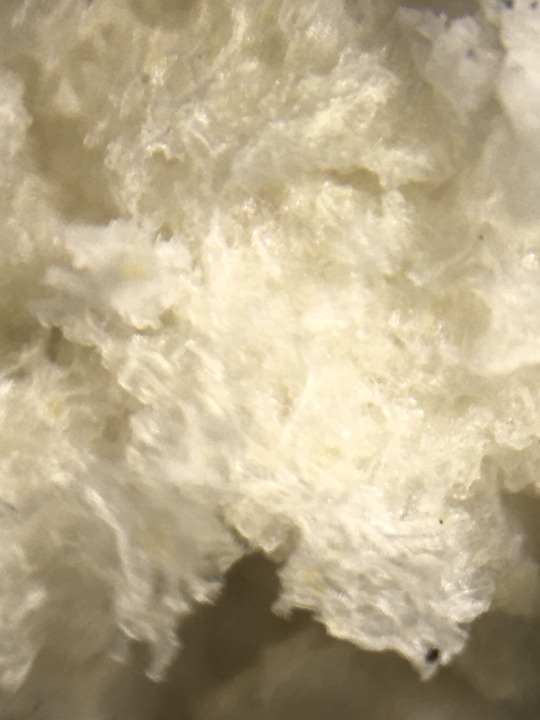
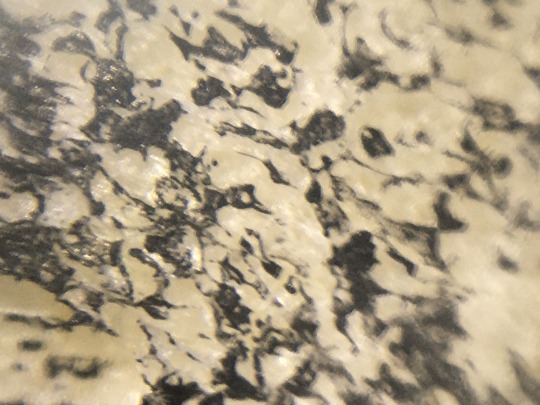

Experimenting with these objects to see new ways I can describe my interactions with them.

What type of marks do these objects make and what does it say about their identity? Farm animals from when I was younger and dried flowers

Taking objects that are part of my everyday and putting them into a different contxt.
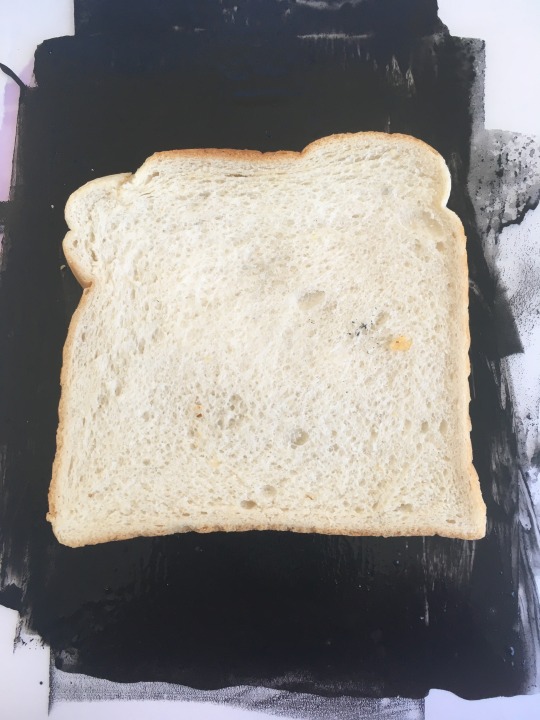
In the investigation I look at showing the task of washing your hair. Hair which is quite light but as the water touches it it becomes weighed down.
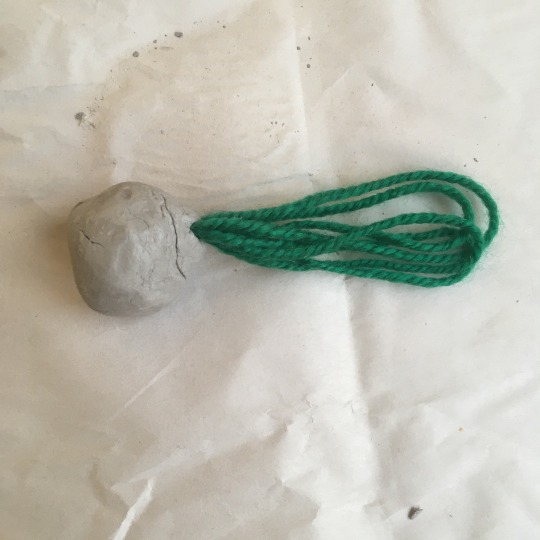
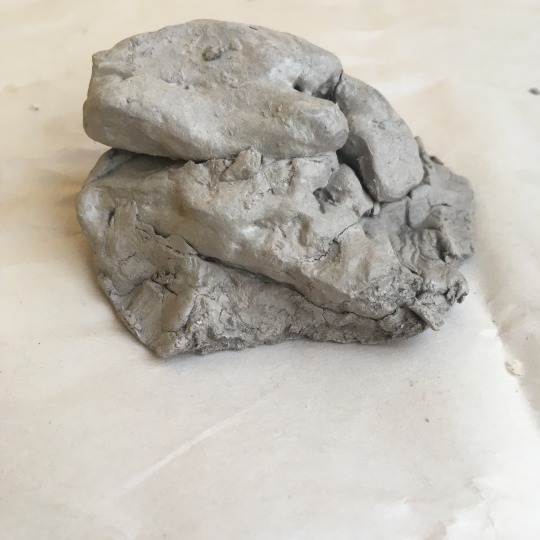

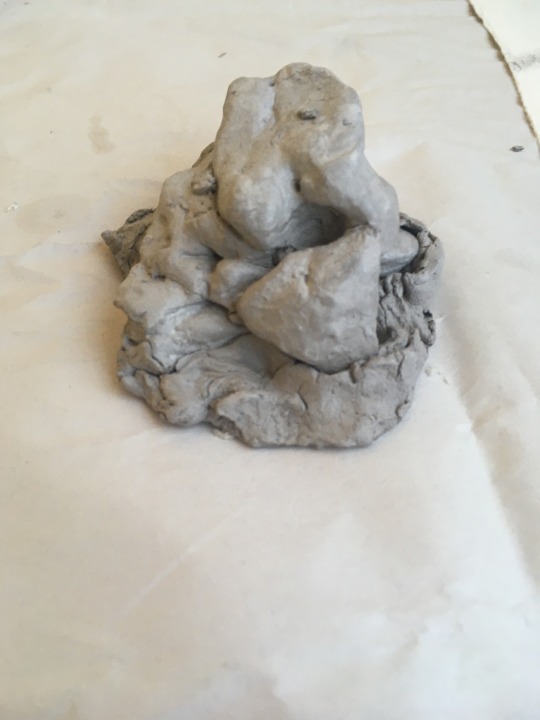
Investigation about the feeling of grabbing a handful of salt and vinegar chips I tried to show the sharpness and the sourness of it as it touches your tongue a sensation that spreads
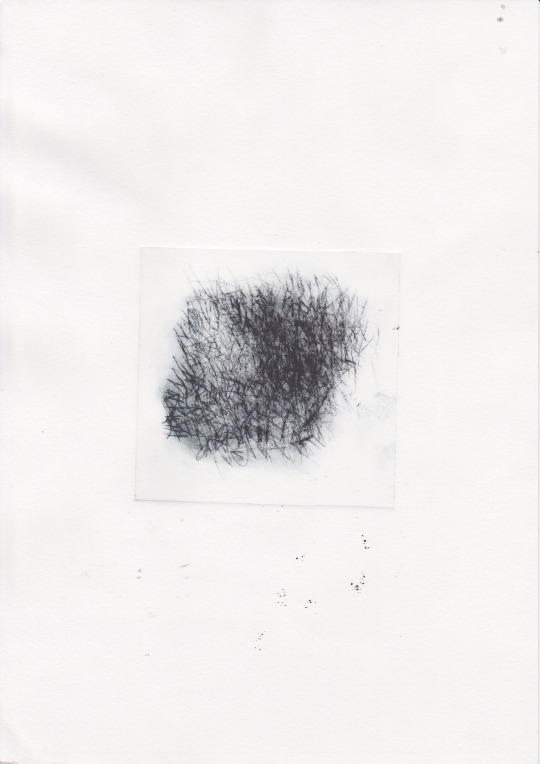
Drypoint Etching - Experimenting the ways I can show touch as being a sense with many layers, showing that touch can be violent and rough, through the layering of words that describe the sense

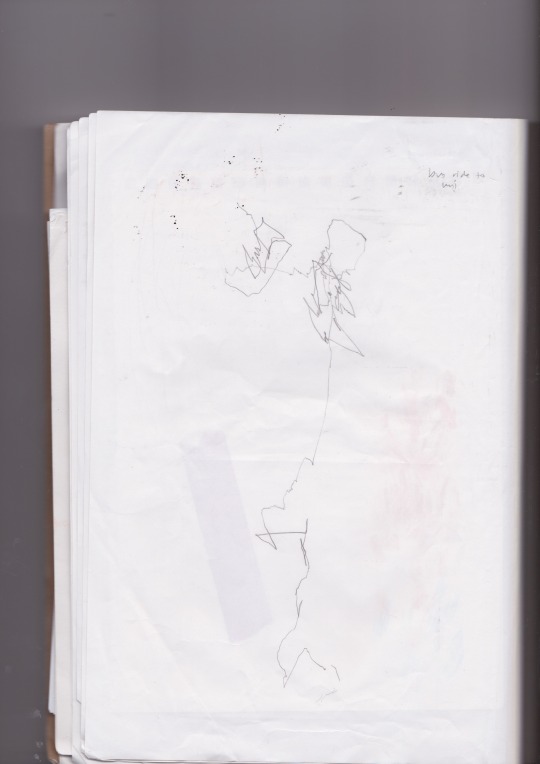
The touch of the pencil on the page which is determined by the movement and touch of the bus on the ground

Mapping out the different temperatures of water on my body in the shower
The feeling of a Half Eaten Apple

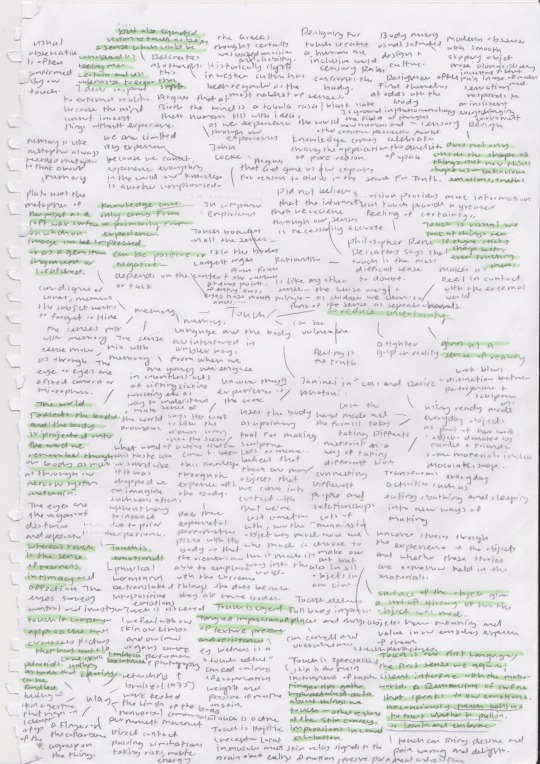
Test Prints - Drypoint Ethching- Printing is down below the surface does not really relate to what I’m trying to show about touch. For these test prints I tried to describe the touch action of brushing your hair


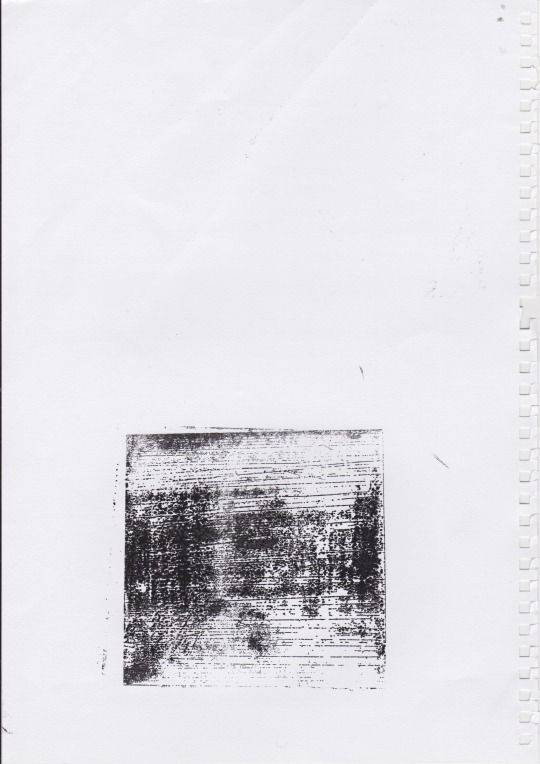
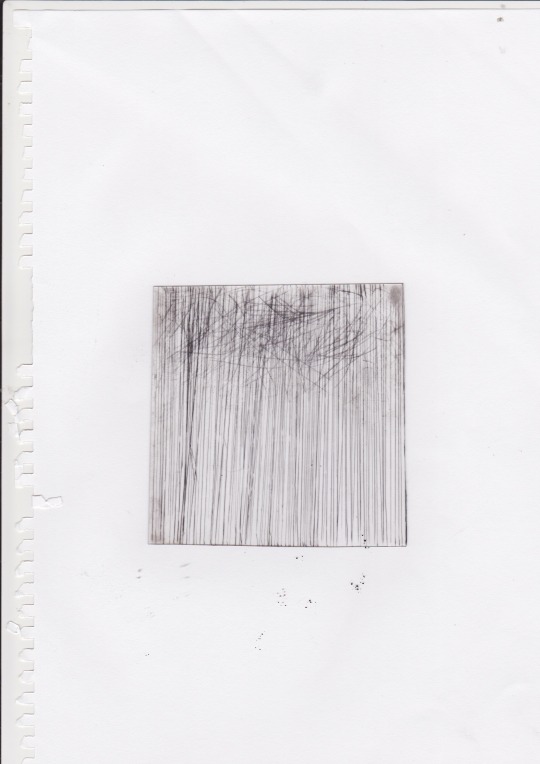
0 notes
Text
The Eyes of the Skin - Juhani Pallasmaa In Western culture sight has historically been regarded as the noblest of the senses and thinking itself thought of in terms of seeing already in greek though certainty was based on vision and visibility “ The eyes are more exact wrote Heraclitus in one of his fragments. (15) Plato regarded vision as humanity's greatest gifts. (15) Vision and hearing are now the privileged sociable senses ,whereas the other three are considered as archaic sensory remnants with a merely private function and they are usually suppressed by the code of culture. The dominance of vision over the other senses and the consequent bias in cognition has been observed by many philosophers Arcihreture as with all art is fundamentally confronted with the questions of human existence in space and time, it expresses and relates man's being in the world. Architecture is deeply engaged in the metaphysical questions of the self and the world, interiority and exteriority, time and duration, life and death.(16) Architecture is our primary instrument in relating us with time and space and giving theses dimension a human measure .It domesticates limitless space and endless time to be tolerated inhabited and understood by mankind Architecture has been regarded as an art form of the eyes. (18) Vision is regarded as the most noble of the senses and the loss of eyesight as being the ultimate physical loss Rene Descartes regarded vision as the most universal and noble of the snes and his objectifying philosophy consequently grounded in the privileging of vision , However he also equated vision with a touch as esne which considered to be “ more certain and less vulnerable to error than vision” (19) Ocular Phobia (20) Meurleau Ponty's sense of sight is an embodied vision that is aincrantate part of the ‘flesh of the world”: out body is both an object among objects and that which sees and touches them they interpenetrate and mutually define each other “My perception is [therefore not a sum of visual, tactile and audible givens: I perceive in a total way with my whole being: I geas a unique structure of the thing, a unique way of being which speaks to all my sense at once” VIsual observation is often confirmed by our touch (23) ‘The body image...is information fundamental form haptic and orienating experience early in life out visual images are developed later on and depends for their meaning on primal exercise that were required haptically' ' Kent c boomer and chalrr W argue in their book body memory and architecture. (40) “What is missing from our dwelling today are the potential transactions between body imagination and environment… to at least some extent every place can be remembered partly because it is unique, but partly because it has affected our bodies and generated enough association to hold it in your personal worlds.” (41) Architect is essentially an extension of nature into the man made realm providition the ground for perception and the horizon of experiencing and understanding the world. Every touching experience of architecture is multi sensory. Arichurec e strrencgthen s the existential experience, one's experience of self instead of the 5 classical senses architecture involve realms of sensory experience which interact and fuse into each other. The body is not a mere physical entity; it is enriched by post memory and dream, past and future (45) Edward S Cassey argues that our capacity of emory would be impossible without a body memories The world is reflected in the body and the body is projected onto the world we remember though our bodies as much as though our nervous system and brain. “The painter ‘takes his body with him’ says Paul Valery. Indeed we cannot imagine how a mind could paint merleau ponty agues. The eyes are the organ of distance and separation whereas touch is the sense of nearness, intimacy and affection. The eyes surveys controls and inverstiges whereas touch approaches and caresses. During overpowering emotional experience we tend to close off the distancing sense of vision we close ou
0 notes
Text
Memory - Wood Byatt Pg xii Memory is not quite the same as unconsciousness, but they are inticalty, touching and delicately intertwined. Someone once said that we consist of the pure theoretical instant of awareness, and everything else is already memory. When we think of ourselves we immediately begin to sort and arrange memories which we then arrange. Memories can be polish, like objects taken out, burnished and contemplated, or they flitter just out of reach, like two lost threads of broken webs To remember is to have two selves, one in the memory, one thinking about the memory, but the twos are not precisely distinct and separating them can be dizzying Paradise Lost Pg xiii Memory is an anthology of the ways people have thought about memory - and, to a lesser extent, of things they have remembered. Craig Raine says in his essay in this book that ‘ Memory is like metaphor in its operations.’ He goes on ‘Memory is sexual in its operations.’ (He is referring partly to the use of the work ‘coming’ in describing sexual pleasure of finding the desired memory from inside) Memory is like metaphor and humans have always needed metaphors to think about memory Plato uses the metaphor of the mind as a soft wax surface on which an image can be impressed, or as a gemstone in which it can be engraved or scratched. St Augstine thought of his memory as palace full of spaces in which he encountered thoughts and people Remembering is a bodily actigi,ing, taking place in the brain and also in the connection between the brina and the nervous system Metaphor itself and our pleasure in metaphor may be the result of two objects or concepts pleasure in metaphor may be the result of two objects or concepts meeting and fusing in these threads of living cells. Not only do we need metahpro to remember - it is a basic part of the process of thinking As Antionion Damasio tells us it turns out that if we think of a hammer we are exciting many different and physically separated area-s those that tigkn of visual images of hammer, those that remember the feeling of visual of how a hand clasps a hammer those that remember words and groups of words and those who can translate ‘hammer’ into different languages. We remember colour words in different parts of the brain from the place where we store the ability to see and recognise colours. Memory, language and the body are intertwined in a very complex way Malcom Boweies is interested in what he calls remembering forward - the way in which a completer or painter can envisage and then make something new by remembering and reshaping something earlier, The way the mind moves forwards and back… “You can feel the form of what is to come, he said, weighing on you. Or in you.” A novel half written, say, that has found its shape, is not unlike the searching the memory for something you know you know Freud discovered the decision of screen memories - memories which disguise or cover, memories the subject wants to forget or hide. But these screen memories at the same time point to the lost indicine,t or love object or fear and the skilled analyst can resurrect the lost memory by the method of asking the ‘patient’ to make free association to dreams, or waking dfers, until it is hoped, the form of what is lost can be brought the surface contemplated reasonably and understood Pg xvii Here the unconscious has done the work of the unnaturally conscious mnemonist and attached meaning to apparently arbitrarily chosen objects. Psychoanalysis deals with subtleties of the relation between memory and forgetting. Recent use os of psychoanalytic techniques ‘ bring to the surface’ lost abuses from childhood, or traumas suffered nad uspseressed have also aroused a considerable interest in false, or created, or invented memories The usefulness of dredging up lost (or imagined) terrors from the deep well of unconsciousness had been called in question for various reasons We need to forget in order to survive. Both psychologists and psychiatrists have studied our propensity to make up memories ,to create or add or subtly chan
0 notes
Text
Figure of Touch Sense, Technics, Body - Mika Elo and Miika Luoto
https://shop.unigrafia.fi/tuote/figures-of-touch-sense-technics-body/
As a sense of modality, touch has been both over - and undervalued in Western culture.
Regarded as the basis of sense certainty and as a rather normative support to the theoretical gaze. On the other hand it has been considered as vague, vulgar, drive-related or impure.
Due to these contradictory and potentially subversive qualities, touch has been invested with various emancipatory expectations. In its ambivalence, their very sense of touch is essentially over-determined.
Addresses the various dimensions of touch, where touch is not only a matter of sensory experiencing of bodily capacity but also one of technics and vulnerability, of exposure and depth of delicacy and tact
Knowledge-oriented approaches encounter their limits , while others address something we could call generative patterns or “figures of touch”
The Forgotten Sense, Meditations On Touch - Pablo Maurette
https://press.uchicago.edu/ucp/books/book/chicago/F/bo28301785.html
Of all the senses, touch is the most ineffable—and the most neglected in Western culture, all but ignored by philosophers and artists over millennia.
Touch is the sense that links us most intimately to the world around us, from our mother’s caress when we’re born to the gentle lowering of our eyelids after death.
Ext addresses touch in multifarious ways, literary in feel ambitious in conception, admirable in their range of reference and insight.
What do we mean when we say art touches us? How does language affect our understanding of touch? Is skin the deepest part of the body?
The First Sense: A Philosophical Study of Human Touch - Matthew Fulkerson
https://mitpress.mit.edu/books/first-sense
It is through touch that we are able to interact directly with the world; it is our primary conduit of both pleasure and pain. Touch may be our most immediate and powerful sense— “the first sense” because the central role it plays in experience.
Fulkerson proposes that human touch, despite its functional diversity, is a single, unified sensory modality.
Fulkerson offers a philosophical account of touch, reflecting the interest, method and approach that define contemporary philosophy; but his argument is informed through by the insight and constraints of empirical
Human touch is a multidimensional object investigation.
The unity of touch
The exploratory form of perception, accounts of tool use and distal touch, the representational structure of tangible properties, the spielt content of touch and the role of pleasure in tactile experience.
Departing from traditional vision-centric philosophical approaches to perception, challenging received view that action plays the same role in all sensory modalities.
0 notes
Text
Marina Abramovic - Point of Contact (1980)
https://www.moma.org/audio/playlist/243/3122
https://www.li-ma.nl/lima/catalogue/art/abramovic-ulay/point-of-contact/7213#
An overarching theme scene in much of Abramovic's work is the concept of energy—energy that can expand and be shared between collaborators as well as between the artists and the audience.
Point of contact, it is a very minimal piece, quite static.
In the piece Abramovi and Ulay point their index fingers towards each other, before they touch there is this sort of aura and energy field for a long period of time, pure presence is the most essential thing to really be in.
If you perform with your body and your mind you can really reach the transformative quality of transcendence and elevate your own spirit and spirit of audience
Point of Contact is a piece that is re-performed continuously throughout a shift for a total of 700 hours.
Abramovic and Ulay are interested in relation, their relation work causes a third existence which carries “Vital Energy”. This third energy existence conjured by us does not depend on us any longer, but has its own quality which we That self.
Aim to search and explore the subconscious
Not about extending limits by means of physical exhaustion, but rather, about the power of concentration.
0 notes
Text
Janinei Antoni - “Loss and Desire” September 10, 2003
Filmed weaving a rope out of materials donated by friends and relatives, Janine Antoni comments that the rope is like a ‘lifeline’
In the video, the artist is later shown walking a tightrope preparing for the video touch where she appears to walk on the blue ocean horizon of her childhood home in the Bahamas.
Uses materials such as chocolate, soap, alrd and rawhide as part of her sculptures.
“There are so many objects that...we’ve lost a connection to what they’re made of, who made them.”
Antoni’s work blur the distinction between performance art and sculpture
Transforms everyday activities such as eating, bathing and sleeping into ways of making art.
Often uses her own body as a primary tool for making sculptures.
In some of her work she has chiseled cubes of lard and chocolate with her teeth, washed away the face of soap busts made in her own likeness and used the brainwave signals recorded while she dreamed at night as a pattern for weaving a blanket the following morning.
Takes different materials like taking different lives, connecting different people and relationships.
Uncover stories through the experience of the objects and whether those stories are somehow held in the materials.
A rope is an umbilical cord, it connects two things
Loves the handmade and any form it takes
Many objects we've come into contact with that we’ve lost that connection to what they're made of who made them
On the surface of the object give a sort of history of how that object was made, how it made it way into the world
Uses body as a tool for making and experiment
Came to this knowledge the through experience of his body
Does these things because the viewer also has a body and can emphasise with the extreme things she puts herself through in her work
To her so much meaning isin how we choose to make something both in art but also in all objects we do within our lives.
The word is like the viewers coming on to the scene of a crime that has been left to uncover
Cradle about cradling each other - ends with the loop spoon when a child is first gaining independence abou that need that we never lose to be held.
The body under the veil
Hollow inside The absence of me and the absence of the cow
Licking and bathing are both quite loving acts but slowly erasing - that conflict
That love hate relationship we have with our physical appearance Rope like lifeline story of life walk it that touch found that wasn't getting more balance more comfortable being out of balance Wish could do this in life
The fall, the impossibility of that illusion
Fiona Candy
Preston based artist, with a background in textile and fashion design
Describes her practices as engaging with perception: sight, touch, hearing, memory and sense of time and movement.
When mind, body and world would interact
Be open to what presents itself - a technique for channeling intuition: to bring ideas into awareness via the unconscious, a way to connect to the surrounding landscape, to reveal answers to questions or suggest new areas of expression.
Sensory experience of being there.
Making Presence Felt: https://vimeo.com/138187905
Captures immersive qualities of an art installation purposely sited in Northampton to connect with ther regions long and facsisintanting tradition of shoemaking.
Invites visitors to move,listen look and make sense
Pitches on the borderline between sound and music.
Audio content link to quizzical materials artworks that acted a visual ‘clues’ to impossible interpretations,
Lack of obvious storylines allows listening viewers to construct their own narratives, based on everyday experiences and identities, memories, stories or even dreams.
Potential to cross over into the less conscious, metaphorical themes: of containment and release, escape and pursuit, repression and the random
Where fact and fiction merge
0 notes
Text
Empiricism
Is a theory that states that knowledge comes only or primarily from sensory experience. It is one of the several views of epistemology, along with rationalism and skepticism.
Empiricism emphasizes the role of empirical evidence in the formation of ideas, rather than innate ideas of traditions. GHowever empiricists may argue that traditions (or customs) arise due to relations of previous sense experiences.
Historically, empiricism was associated with the ‘blank slate’ concept (tabula rasa) according to which the human mind is ‘blank’ at birth and develops its thoughts only through experience.
Empiricism in the philosophy of science emphasis evidence, especially as discovered in experiments.
Empiricism often used by natural scientists says ‘ that knowledge is based on experience’ and that knowledge is tentative and probabilistic, subject to continued revision and falsification. Empirical research including experiments and validated measurement tools, guides the scientific method.
https://www.sparknotes.com/philosophy/johnlocke/themes/
For Locke all knowledge comes exclusively through experience.
He argues that at birth the mind is a tabula rasa, or blank slate that humans fill with ideas as they experience the world through our senses.
Locke defines knowledge as the connection and agreement or disagree and repugnancy, of the ideas humans form. From this definition it follows that our knowledge does not extend beyond the scope of human ideas.
Because ideas are limited by experience, we cannot possibly experience everything that exists in the world, our knowledge is further compromised. However Locke asserts that our knowledge is necessarily limited in these ways, we can still be certain of some things. Eg We have an intuitive and immediate knowledge of our own existence, even if we are ignorant of the metaphysical essence of our souls. We also have a demonstrative knowledge of God’s existence, though our understanding cannot fully comprehend who or what he is. We know other things through sensation.
We know that our ideas correspond to external realities because the mind cannot invent such things without experience. Eg A blind man for example would not be able to form a concept of colour. Therefore those of us who have sight can reason that since we do perceive colors they must exist.
Locke argues that God gave us our capacity for reason to aid us in the search for truth. As God's creation we know that we must preserve ourselves. To help us God created in us a natural aversion to misery and a desire for happiness, so we avoid things that cause us pain and seek out pleasure instead.
. http://www.nwlink.com/~donclark/history_knowledge/locke.html#:~:text=Locke%20views%20us%20as%20having,into%20new%20ideas%20via%20reflection.
John Locke (1632 - 1704) Locke views us as having sense organs that when stimulated, produce “ideas of sensation” these ideas of sensation in turn are operated on by our minds to produce “ideas of reflection” thus ideas come to us via our senses which in turn can be turned into new ideas via reflection. Tges two routes that ideas take are derived from experience - we can have no knowledge beyond our ideas. There are two kinds of materials ideas: simple and complex. Simple ideas have one attribute such as the sky is blue or lemons are sour while complex ideas are compounds of simple ideas. These are building blocks to ideas - they come to us via our senses, and in turn we can reflect upon them to form complex ideas.
0 notes
Text
René Descartes René Descartes (b. March 31, 1596, La Haye, Touraine, France - died February 11, 1650, Stockholm, Sweden), was a French mathematician, scientist, and philosopher. Descartes has been called the father of modern philosophy as he was the first to abandon Scholastic Aristotelianism, because he formulated the first modern version of mind-body dualism, from which stems the mind-body problem as well as promoting the development of a new science that is grounded in observation and experimentation. https://www.britannica.com/biography/Rene-Descartes/Meditations https://www.sparknotes.com/philosophy/descartes/themes/#:~:text=Descartes%20asserts%20that%20these%20facts,be%20the%20essence%20of%20humanity. University Of London - In Touch With Reality https://london.ac.uk/touch-reality Why would people want to touch objects that they can clearly see? What is it that touch provides that vision does not? Philosophers, starting with Rene Descartes, all noted that touch provides ‘ a sense of reality’ and makes us feel in contact with the external world. By contrast, psychologists have tended to assume that touch has no intrinsic superiority over the other senses. As humans it is common for us to use touch as a way of ‘fact checking’ but our reasons for it remains unexplained. Biblical account of the doubting apostle Thomas - ‘Thomas effect’, this can be seen in things such as retail stores where people are allowed to touch the products or in clinical cases patients with compulsive disorders tend to check taps or lock by touch, even though they can see that they’re closed. ‘Obsessive compulsive disorder or the “doubting disease” is characterised by an obsessive need to fact-check, often by touch, to reduce uncertainty, says cognitive neuroscientist Dr Merle Fairhurt. ‘ From our data, it seems that, when the context is ambiguous, our sense of touch does something beyond providing us with accurate information - it gives us a sense of certainty - a tighter grip on reality.’ ‘Making sense of the special status of touch looks incredibly difficult for modern neuroscience. Touch after all, is like other senses. It is good sometimes, bad at others, and it all depends on the context and task.” - Dr Ophelia Deroy. Touch is not better or more accurate than the other senses but it is a sense that makes us feel better. Descartes says that touch is the most difficult sense to doubt. “... vision provides more information, but touch provides a greater feeling of certainty. This shows how complicated reflecting on our own perceptions can be.’ Feeling is the truth. https://www.sparknotes.com/philosophy/descartes/themes/#:~:text=Descartes%20asserts%20that%20these%20facts,be%20the%20essence%20of%20humanity. The Unreliability of Sense Perception Descartes did not believe that the information that we receive through our sense is necessarily accurate The Dream Argument Deceiving God and Evil Demon Argument - in this argument Descarters demonstrates that these senses can be deceived. If cannot trust our senses to convey true information about the world around us, then we cannot also trust deduction we’ve made on the grounds of sense perception At the time Descartes cast doubt on the reliability of sense perception. It was a radical position. He proposed that scientific observation had to be an interpretive act requiring careful monitoring. The proponent of the British empiricist movement especially opposed Descartes’ ideas. They believed that all knowledge comes to us through the senses. Descartes and his followers argued the opposite, that true knowledge comes only through the application of pure reason.
0 notes
Text
Rosalyn Driscoll
The work of Rosalyn Driscoll explores the terrain of her body—not the visible body, but the inner body, translating her discoveries into sculpture, instillations, collage and photographs.
Uses materials such as wood, steer, paper, rope and cloth, often combined with materials such as rawhide, a powerful malleable material that evokes life, death and transformation.
Infuses the translucent rawhide with neon lights and videos as a way to dematerialize the sculptures and amplify peoples somatic response and convey impermanence.
Collaborates with dancers, filmmakers, scientists, theater artists and phenomenologists to explore the interaction of the forces of body, nature and spirituality.
Consider her work as relational fields that connect to the senses, bodies and lives of the people they touch and to the nature of the palace they inhabit.
Moving Water
https://vimeo.com/108765276
Moving Water offers a moving, embodied sensory experience of our biological, psychological, cultural understanding of water through handling sculptural vessels that contain water.
Made from sensuous materials such as glass, rawhide, metal and clay.
The vessels containing water were exchanged among audience members in an individual and collective exploration.
The attention and empathy conveyed through these actions conveys a poetic narrative about water qualities, ubiquity, use and loss.

Ulay (1943 - 2020)
https://www.artbasel.com/catalog/artwork/18821/Ulay-Retouching-Bruises
German Based Artists based in Amsterdam and Ljubljana
Best recognised for his polaroid art and collaborative performance art with longtime companion Marine Avramovic
The main concepts explored by Ulay and Avramovic explored in their work were ego and artistic identity.
Created “relation works” - characterised by constant movement, change, process and “art vital” expressed in their Relation Works (1976 - 1988) manifesto: ‘Art Vital” No fixed living place, permanent movement, direct contact, local relation, self-selection, passing limitations, taking risks, mobile energy.”
The work of Ulay and Abramovic tested the physical limitations of the body, exploring male and female principle, physic energy, transcendental meditation as well as non verbal communication
Retouching Bruises, 1975
100 pieces, Polaroid Photography, Each 8.5 x 108. Unframed
A collaboration with Marina Abramovic
Combines performance art with photography
The series capture an intimate series of action in which Ulay and Abramovic mark each others flesh with ink — a finger on the collarbone, a grasp on the thing
A dark fingertip onto the skin, a gesture that maps one identity on top of another.
Reiterating the exchange, the transfer of fingertip onto the Polaroid photographs themselves, helps to reassert the immediacy of both the action and the medium.
Ulay used his body as the starting point and as a means of expression because of its immediacy, photography was logically his medium.
His work is an offering, thus for him, his project is about ‘ an exchange of gift’ including aspects of himself portrayed through his performance and self images
Polaroid camera which takes uniques images that themselves become objects of exchange (‘bodies’ to be fondled”)
The pictures hurt. But they also sing of possible love, of a love that marks and potentially harms, while also stroking, soothing, adoring. The love imprints but also grasps (the beloved body, the surface of the Polaroid)
https://stedelijkstudies.com/wp-content/uploads/2016/03/Stedelijk-Studies_Retouching-Bruises_Long_PDF.pdf
Marks argues that such haptically visual experiences imply a mourning of an absent or lost object, in contrast to optical visuality, which presents the visual image as a way of resuscitating what is lost by making it appear to be whole
Ulays vulnerability and fearlessness is in exploring what we might imagine to be his own radical sense of loss and alterity — vulnerability in the face of the assaults, large and small that characterize contemporary existence
Proves that relationships are never static, completely balanced or free from the potential of hurt and loss.
In each picture of the Retouching Bruises series, the flesh is marked by fingerprints, or shown to be in the grip of this act of marking, which is also a touching or holding or gripping or pinching. We see a male hand on a woman’s body and a female hand on a man’s body —there is an explicit eroticism as the bodies are naked, malleable, even shown as sensitive to touch and temperature, with hairs raised.
The skin of each photograph —its thick emulsion surface —is also tattooed by fingerprints, which touch again: skin, surface, touch are doubled in an abyss of performative action and representation.
There is this complexity to Polaroid — emulsion weighing them down, creating a density and a chemical smell that allows them to be objects in their own right.
“I think of a photograph as an emulsion, as a microscopically thin, light sensitive skin, adhered to a sheet of paper and wanting to show something. [Also, for me photography is an intimate object, an image on paper that can fit in your hand and be passed around.”
Retouching bruises evoke relations of what Laura U. Marks in her book ‘The Skin of the Film’ described as “haptic visuality”: the tactile qualities of skin suggested through the visual texture and depth of photographic imagery.
But as Ulay suggests, the Polaroids have another dimension of tactility —that of their objecthood — they beg to be held, smelled and experienced through our own touching and feeling.
https://www.artbasel.com/catalog/artwork/18823/Ulay-Retouching-Bruise
0 notes
Text
The Senses: Design Beyond Vision By Ellen Lupton and Andrea Lipps The senses mix with memory. From infancy human creatures engage in countless acts of lifting, licking, touching, sniffing, throwing, dropping, hearing, balancing and more, constantly testing the edges of physics to understand (or “make sense of”) the world we were born to discover. (12) When we encounter an oddly shaped coffee cup or an updated operating system we don’t see it as being completely alien but focus our attention on disparities between what’s new and what we’ve encountered in the past. What would this taste like if you licked it? What sound would this make if you dropped it? We are able to imagine these sensations without the need to interact with them. Prior knowledge tells our brains what to expect (12) The senses move us through space. The eye or eyes is not a fixed camera or microphone. (12) Traditionally designers focused on creating static artefacts but now think about how people interact over time with a product or place (12) The senses merge and mingle — as children we learn to think of the senses as being these separate channels (13) “Some sensation buzz along in the background while others dominate” — instead it is more complex than that. The brain combines different modes of information, the senses mutually changing one another. E.g. Golden light makes a room feel peaceful and warm while in comparison cool daylight gues charge a room with energy. (13) The senses are unique to each individual (13) The senses trigger and amplify other senses (15) Sensory design considers not just the shape of things but how things shape us - our behaviour, emotions, our truth, sensations respond to an insistent, ever-changing environment. (21) Sensory design is grounded in phenomenology. The field of thought explores how humans and other creatures perceive the world. Sensory design knits together time and space (27) Sensory design celebrates the qualities of place (27) Designers often find themselves at odds with the body. (29) Modernism tended to favour hygiene and control over organic processes (29) Our modern obsession with smooth, slippery objects arose alongside the drugs invented to blunt pain in the age of modern medicine. (29) Body numbing visuals saturate design culture (29) Touch borders on all the senses. Skin, the body’s largest organ flows from the outside at every point of entry: ears, eyes, nose, mouth, anus and genitals. (31) “ Filmmaker David McDouggal writes, “I can touch with my eyes because my experience of surfaces involves both touching and seeing.”13 The eye strokes the contours of distant glistening bodies the hand can’t reach.” (31) Sensory design confronts the body (31) Objects gain meaning and value in our embodied experience of them (31) Touch is our first language, the first sense that we acquire. Touch is our silent interface with the material world. Touch is the third dimension of surface that speaks to our emotions. Unconsciously, touch tells us whether to trust, whether to pull away or lean in and embrace (41) Universal design is the act of considering all audiences, or as many as we can, at the beginning of a project, and iterating upon this consideration until we arrive at a solution that is usable by far more people than if we had not taken such a design tact. “Inclusive design” is a newer term, used by many contemporary designers and advocates. While “universal” implies a potentially unattainable burden for designers and developers, “inclusive” is an invitation. It’s warm, and it aligns with most people’s basic values. (47) The senses are protective mechanisms. The senses deliver joy as well as warnings. Warmth, texture and vibration. (67) Touch delivers full-body impressions of place and thing. Touch penetrate the body. It brings pain and pleasure, warning and delight. It can calm us and connect us and overwhelm us (68) Touch is specialised. Skin the main instrument of touch. The receptors in our fingertips gather hyper-detailed data about the things we touch, while other regions of the skin convey impressions
0 notes
Text
Sensory Studies
sensorystudies.org
Sensory studies arise at the conjuncture (and within) the field of anthropology, sociology, history, archaeology, geography communication religion philosophy literature art history museology film mixed media performance phenomenology disability aesthetic architecture urbanism and design
Sensory studies can also be divided along sensory lines into for example visual culture auditory culture (or sound studies), smell culture taste culture and the culture of touch, not to mention the sixth sense (however it might be defined)
Picture Gallery - ‘The Sixth Sense’ By Nicholas Wade

Throughout history, the sixth sense has remained hidden. The senses referred to seeing, hearing, tasting, smelling and feeling were set in stone by Aristotle.
The last two centuries of science have sought to shatter this ancient belief but it still remains fixed in the popular imagination — the prominence of eyes, ears, nose and tongue on the head and the specific experiences with them, have acted in the past, as well as in the present, to fix these four senses.
Feeling has presented more problems due to its sensitivity not being localised to a particular sense organ and the experiences derived from the skin are diverse.
Experiences such as touch, tickling, warmth and cold are alluded to in the illustration as well as other terms for the senses like vision, audition, gestation, olfaction, somatosensation, kinesthesia and vestibular stimulation. It is argued that the last slowly emerged in science as the sixth sense, similar to the gradual appearance of the words seen in the illustration.
The Senses: Design Beyond Vision By Ellen Lupton and Andrea Lipps The senses mix with memory. From infancy human creatures engage in countless acts of lifting, licking, touching, sniffing, throwing, dropping, hearing, balancing and more, constantly testing the edges of physics to understand (or “make sense of”) the world we were born to discover. (12) When we encounter an oddly shaped coffee cup or an updated operating system we don’t see it as being completely alien but focus our attention on disparities between what’s new and what we’ve encountered in the past. What would this taste like if you licked it? What sound would this make if you dropped it? We are able to imagine these sensations without the need to interact with them. Prior knowledge tells our brains what to expect (12) The senses move us through space. The eye or eyes is not a fixed camera or microphone. (12) Traditionally designers focused on creating static artefacts but now think about how people interact over time with a product or place (12) The senses merge and mingle — as children we learn to think of the senses as being these separate channels (13) “Some sensation buzz along in the background while others dominate” — instead it is more complex than that. The brain combines different modes of information, the senses mutually changing one another. E.g. Golden light makes a room feel peaceful and warm while in comparison cool daylight gues charge a room with energy. (13) The senses are unique to each individual (13) The senses trigger and amplify other senses (15) Sensory design considers not just the shape of things but how things shape us - our behaviour, emotions, our truth, sensations respond to an insistent, ever-changing environment. (21) Sensory design is grounded in phenomenology. The field of thought explores how humans and other creatures perceive the world. Sensory design knits together time and space (27) Sensory design celebrates the qualities of place (27) Designers often find themselves at odds with the body. (29) Modernism tended to favour hygiene and control over organic processes (29) Our modern obsession with smooth, slippery objects arose alongside the drugs invented to blunt pain in the age of modern medicine. (29) Body numbing visuals saturate design culture (29) Touch borders on all the senses. Skin, the body’s largest organ flows from the outside at every point of entry: ears, eyes, nose, mouth, anus and genitals. (31) “ Filmmaker David McDouggal writes, “I can touch with my eyes because my experience of surfaces involves both touching and seeing.”13 The eye strokes the contours of distant glistening bodies the hand can’t reach.” (31) Sensory design confronts the body (31) Objects gain meaning and value in our embodied experience of them (31) Touch is our first language, the first sense that we acquire. Touch is our silent interface with the material world. Touch is the third dimension of surface that speaks to our emotions. Unconsciously, touch tells us whether to trust, whether to pull away or lean in and embrace (41) Universal design is the act of considering all audiences, or as many as we can, at the beginning of a project, and iterating upon this consideration until we arrive at a solution that is usable by far more people than if we had not taken such a design tact. “Inclusive design” is a newer term, used by many contemporary designers and advocates. While “universal” implies a potentially unattainable burden for designers and developers, “inclusive” is an invitation. It’s warm, and it aligns with most people’s basic values. (47) The senses are protective mechanisms. The senses deliver joy as well as warnings. Warmth, texture and vibration. (67) Touch delivers full-body impressions of place and thing. Touch penetrate the body. It brings pain and pleasure, warning and delight. It can calm us and connect us and overwhelm us (68) Touch is specialised. Skin the main instrument of touch. The receptors in our fingertips gather hyper-detailed data about the things we touch, while other regions of the skin convey impressions
0 notes
Text
Proprioception
Proprioception (sometimes referred to as Kinesthesia) is the sense through which we perceive the position and movement of our body including our sense of equilibrium and balance, it is a sense that depends on the notion of force, the awareness of the body in space. It can be defined as the conscious or unconscious awareness of joint positions whereas neuromuscular control is the efferent motor response to afferent (sensory) information. Proprioception includes a complex of sensations including the perception of joint position and movement and muscle force and effort — these sensations arise from signal or sensory reception which are located in the muscle joints and from central signals related to motor output. Proprioception enables us to judge things such as limb movement and positions as well as force, heaviness, stiffness and viscosity. Combining it with other senses we are able to locate external objects relative to the body and contributes to body image. It is derived from the Latin Word proprius meaning ‘belonging to one’s self’. Proprioception is one of the sensory systems often grouped together as the ‘somatosenses’ or ‘body senses’.
Equilibrioception
Equilibrioception is a psychological sense in humans and animals that prevents them from falling over as they move or stand. It involves the visual system (eyes) vestibular system (the inner ears) and proprioception working together to achieve a sense of balance. The sense of balance reflects an awareness of equilibrium involving the perception of gravity. It can be further defined as a mechanism of faculty by which a living organism receives information about its external or internal environment allowing it to react accordingly. In the vestibular system, equilibrioception is determined by the level of a fluid called endolymph in the labyrinth, a complex set of tubing located in the inner ear.
Body Awareness
Is the sense of self-movement and body position, sometimes referred to as the sixth sense. It is the internal understanding of where the body is in space. Body awareness is highly influenced by proprioception processing, the sensory information one receives from the movement and force of muscle and joint group. Body awareness helps one identify their body in relation to their suLorrounding environment helps them to navigate through that environment. It also relates to one’s understanding of directionality and overall spatial orientation. Body awareness involves an attentional focus on and awareness of internal body sensations.
Haptic
Haptic is relating to or based on the sense of touch. Derived from the Greek word ‘haptesthai’ meaning ‘to touch’ Haptic entered the English language in the late 19th century as a medical synonym for tactile. By the mid 20th century it had developed great psychological sense describing individuals whose perception depended primarily on touch rather than sight. Haptic perception means the ability ‘to grasp something’. Perception, in this case, is achieved through the active exploration of surface and objects by a moving subject as opposed to passive contact by a static subject during tactile perception. Gibson defined the haptic system as being “The sensibility of the individual to the world” is adjacent to his body by use of his body. Gibson and many others further emphasised what was realised by Weber in 1951— the close link between haptic perception and body movement, haptic perception being active exploration. Haptic perception relies on the forces experienced through touch, to transmit and understand information. In science and technology, haptic relates to the use of tactile sensation to an interface.
Importance of Haptic Perception
Touch is essential for understanding, exploring and interacting with the world around us — through touch, we are able to understand sensations such as cold or hot, soft and hard.
Fundamentally associated with our sense of body ownership, presence and ultimately linked to the ways we communicate with emotion
Tactile sensations, vision and proprioception all combine to create our sense of body ownership and presence. When this is disrupted we can become disorientated, losing a sense of what our body is or isn’t
Reaching out to touch things to assure ourselves of their reality is also a fundamental human behaviour.
Philosopher Rene Descartes describes touch as being the sense that is “least deceptive and most secure”
Tactile sensations warn us, they allow us to discriminate between objects providing a 360-degree field of perception, unlike vision.
Haptic feedback makes action possible
Essential for emotional connection and wellbeing.
Mechanoreception
Mechanoreception is the ability to detect and respond to certain kinds of stimuli — notably touch, sounds and changes in pressure or posture in its environment. Sensitivity to mechanical stimuli is a common endowment among animals. In addition to mediating the sense of touch, mechanoreception is the function of a number of specialised sense organs, some found only in particular groups of animals. Therefore some mechanoreceptors act to inform the animal of changes in bodily posture, while others help detect painful stimuli and still others serve the sense of hearing. Humans experience pain as a result of stimulation of pain receptor (nociceptors), which are located in the skin and other tissues. The stimulation of pain receptors is characterised by a range of physiological and psychological responses, including an effort to withdraw from the stimulus. Mechanoreception is the perception of any mechanical distortion to the body. This may result from touching an object or from the impact of vibration borne through the air, water etc, and thus mechanoreception includes our sense of hearing.
Balance
Balance is a biological system that enables us to know where our bodies are in an environment and to maintain the desired position. Balance depends on information from the inner ear as well as other sense such as sight, touch and muscle movement. The inner ears monitor the direction of motion such as the turning of the head, backwards, side to side, and in an up and down motion. The eyes observe where the body is in space eg. upside down or right side up as well as the direction of the motion. Skin pressure receptors such as those on feet sense what part of the body is down and touching the ground while muscle and joint sensory receptors report what sports of the body are moving. The central nervous system, brain and spinal cord process all the bits of information from the four other systems to make some coordinated sense of it all.
Vibration
Vibration is the periodic back and forth motion of the particles of an elastic body or medium commonly resulting when almost any physical system is displaced from its equilibrium condition and allowed to respond to the forces that tend to restore equilibrium. Vibrations can fall into two categories: free and forced. Free vibration occurs when the system is disturbed momentarily and then allowed to move without restraint such as a weight suspended by a spring. In equilibrium, the system has minimum energy and the weight is at rest. If the weight is pulled down and released, the system will respond by vibrating vertically. Most systems that suffer from small disturbances counter them by exerting some form of restoring force.
0 notes
Text
Marres - Training the Senses
Aurality, Hearing
‘Training the Senses: Silence’. Marres, https://marres.org/en/programmas/training-the-senses-on-silence-2/. Accessed 29 Sept. 2020.
Smells form part of our knowing
They can be elusive often disappearing before they can be pinned down with speech
Can bring strong memories of places and events although it can be hard to identify even quite strong smells, including bleach, rosemary and lavender
Research shows that people who have grown up in non-western culture have a more developed vocabulary for scents and that Europeans find it easier to identify scents the more they talk about these scents.
Scents are significant yet they are also difficult to grasp
In session looked at ways of identifying and expressing smell, readings about scents as well as analysing the relationship between smells and words.
What does scent mean? Everyone has a different fragrance wheel
Scents can be memory-related memories can be very specific
Odours and emotion
Odours are really strong ques to our own sort of autobiographical
How easy is it to separate our senses - synesthesia - having extra connections or grounding smells in our senses such as colour can be another way to improve language and relate it to smell.
Smell and Olfactory
‘Training the Senses: Talking Smell | Marres, Maastricht’. Marres, https://marres.org/en/programmas/training-the-senses-talking-smell/. Accessed 29 Sept. 2020.
Smells form part of our knowing
They can be elusive often disappearing before they can be pinned down with speech
Can bring strong memories of places and events although it can be hard to identify even quite strong smells, including bleach, rosemary and lavender
Research shows that people who have grown up in non-western culture have a more developed vocabulary for scents and that Europeans find it easier to identity scents the more they talk about these scents.
Scents are significant yet they are also difficult to grasp
Looked at ways of identifying and expressing smell, readings about scents as well as analysing the relationship between smells and words.
What does scent mean? Everyone has a different fragrance wheel
Scents can be memory-related memories can be very specific
Odours and emotion
Odours are really strong ques to our own sort of autobiographical
How easy is it to separate our senses? - synesthesia - having extra connections or grounding smells in our senses such as colour can be another way to improve language and relate it to smell.
0 notes
Text
The Senses — abrasive, buttery, clammy, doughy, effervescent, design, foamy, gurgling, hissing, icky, jangling, knotty, lemony, minty, nubby, oily, beyond pungent, quiet, rank, silky, tank, unctuous, viscous, waxy, xilinous, yeasty, zingy vision
0 notes